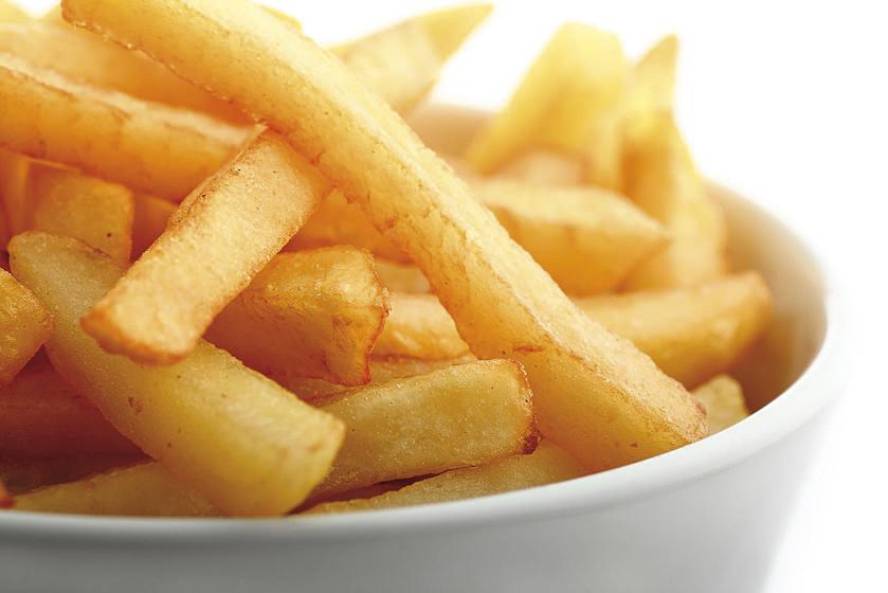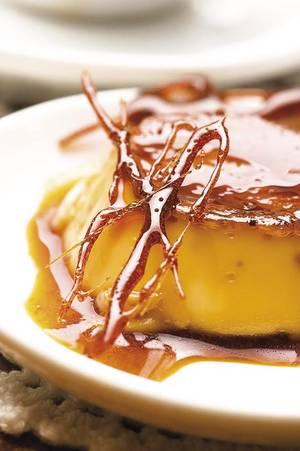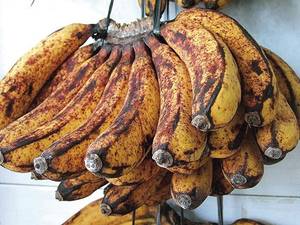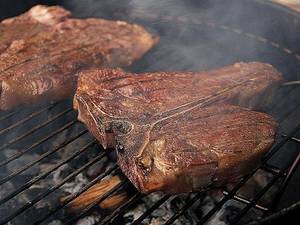Fries of Mr. Maillard
We have important groups of reactions that can cause chemical changes in food, as is the case of our potato fried in oil. As a result of these chemical processes, foods acquire a yellow-brown color and are very common in certain foods. The drag processes are classified into two large groups: on the one hand, enzymatic care and, on the other, non-enzymatic care. In turn, two groups of processes are distinguished between non-enzymatic attention processes: caramelization and Maillard reaction.
Enzymatic attention
Enzymatic care is mainly produced in fruits and vegetables and is responsible for the brown color that these foods acquire. Apples, bananas, pears, lettuce, mushrooms, etc., acquire this brown color so known for its enzymatic drag processes. It is usually said that the fruit has been oxidized and so, since when enzymatic deposition occurs, the phenolic compounds that contain the food are oxidized by the enzyme called polyphenoloxidase. This oxidation is due to atmospheric oxygen and enzymes accelerate the reaction. Normally, for enzymatic attention to occur, food must suffer damage, for example, when we cut an apple or when a banana takes a blow. The cells break as a result of this damage and begin to react polyphenols and polyphenoloxidases, initially well separated. The enzymatic catalyzed reactions provoke the transformation of phenolic compounds and the obtaining of brown pigments, such as melanin.
Caramelization
On occasions, the reactions of auction are not adverse reactions, they are intentional processes in the preparation of foods, such as caramelization. Caramelization is a non-enzymatic rebound process that is due to the pyrolysis of sugars. The warming of sugars, like sucrose, above the melting point, results in a series of reactions that give rise to the appearance of brown pigments and aromatic compounds such as furans, furanonas and lactonas. In the heating process, yellow and reddish colours are initially obtained, then brown and, if the sugars are heated more, black colours are obtained. The reactions involved in the process are quite complex and although they are not known exactly, the most important reaction groups are the processes of isomerization and dehydration of sugars.
Reaction maillard maillard
The maillard reaction -- or reactions, for being a group of reactions- is a process of non-enzymatic rebound, result of really interesting reactions. More than a hundred years ago, in 1912, these reactions were first investigated by French chemist and physicist Louis Camille Maillard. Maillard investigated the reactions derived from the processes of heating between amino acids and sugars. According to him, among these compounds there was some specific reaction that made the brown brown brown color of food appear. Maillard called melanoidine the chemical compounds that were formed together with care and tried to study their generation mechanisms for their importance to health.
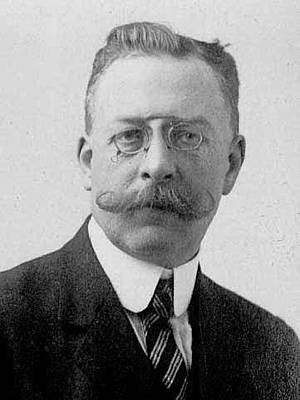
Mr. Louis Camille was not mistaken, since the amino acids and sugars needed to produce the reaction of Maillard are very abundant compounds in foods: the first - proteins are long chains of amino acids - and the second - starch, glucose, lactose, sucrose and abar-- in carbohydrates. In addition, during the preparation of food, foods containing this type of compounds often undergo high temperature processes. The Maillard reaction is responsible for the brown color that appears when burning fish and meat. And not only in them, the Maillard reaction is very common in many other foods: toast, pastries, chips, toasted coffee, red beer, pizza, biscuits, cereals, etc.
Although the Maillard reaction is given everywhere, from a chemical point of view it is a complex set of reactions. After Maillard's investigation they had to spend more than forty years. Until Hodge made a first exhaustive description of the process. Although all the reactions involved in the drag process are still not exhaustively known, interesting steps have been taken to understand the Maillard reaction.
The Maillard reaction is not only involved in the drag process, but is the response that produces chemical compounds that have a fundamental influence on the flavor and smell of food. From a chemical point of view, the reaction consists of three phases. In a first phase, the carbonyl group of a sugar reacts with the amino group of an amino acid to supply unstable water and glycosylamines. In the next phase, glycosylamines undergo the so-called reorganization of Amador, which results in the formation of several cetosamines, among others. In the third phase, ketosamines and other molecules undergo a huge group of reactions -- additions, reorganizations, polymerizations, etc.- and numerous compounds are formed that modify the properties of food. Among them, in foods good compounds appear for health, such as melanoidins, and others less good, such as heterocyclic amines and acrylamide.
Acrylamide everywhere
The effect on the health of the by-products of the Maillard reaction is a field of great importance in the chemistry of food, being probably the most known case of acrylamide. Acrilamida is an organic compound of the group of amides that, in addition to being a neurotoxic substance, the International Agency for Cancer Research --IARC - has classified acrylamide as a group 2A cancer generator since 1994, that is, a probable cancer generator as human.
The concern for acrylamide arose after an investigation carried out in Sweden, following a discovery by chance. In 1997, on the occasion of the works of the Hallandsamets tunnel, workers and neighbors suffered a poisoning due to acrylamide. Being the origin of acrylamide one of the products used to seal the cracks of the tunnel, he was requested to investigate the levels of acrylamide of tunnel workers at the University of Stockholm, M. Törnqvist. As usual in this type of research, it compared the degree of acrylamide of workers with a control group. This control group was a population that had no contact with the product used in the tunnel, but the surprise of the researchers was that the blood of the control team members had a worrying concentration of acrylamide.
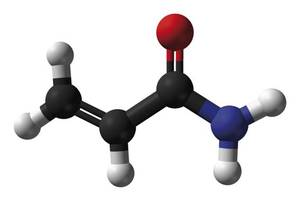
The conclusions of this study were published in 2002 and since then numerous scientific articles have been published on the presence of acrylamide. Today it is known that Maillard appears as a by-product of reaction in many foods processed at relatively high temperatures, that is, due to the scraping process. For acrylamide to appear, between sugars and the amino acid called asparagin, a Maillard reaction must occur. When this chemical cocktail is processed at high temperature, which can be in a domestic frying pan, the food will have acrylamide and its concentration is usually 30-1,350 ?g/kg. However, this value depends on the type of food, the food preparation temperature, etc. In general, the production of acrylamide starts above 120 °C, with a maximum production rate of 160 to 180 °C. As a result of the Maillard reaction, in general, we take between 0.3 and 4 ?g per kilogram and body weight day, according to the International Health Organization. The problem is that perhaps it is the one that has produced the most panic, that the food with the highest concentrations of acrylamide is a typical dish that we like many: fries.
In the case of potato, the most abundant free amino acid is asparagine --93.9 mg of 100 grams - and sugar glucose --starch is a giant chain of glucose-, so the two components that allow the reaction of Maillard are present. In addition, the reaction temperature Maillard is used in the frying of potatoes, so the concentration of acrylamide of this food is usually around 400-1,200 ?g/kg. The reader will find detailed information in the study of the bibliography Medeiros Vinci and his companions. However, and simplifying the accounts, 150 g of chips are enough to overcome the safe amount of acrylamide that can be taken daily.
So what to eat?
As advances are made in instrumental analytical techniques, more and more detectable compounds are found in food, and, in addition, we are able to locate them in smaller and smaller concentrations. The personal decision is to prepare brown or soft fries, chuleta well toasted or not, etc., but to avoid the reaction of Maillard is difficult, since for it we would have to exclude from the diet products like chips, coffee, fish and roasted meat, toast and many other foods that suffer from scraping processes. In any case, concentrations of toxic compounds are really low and the remaining alternative is not to eat, and it is evident that their effects are more serious.
Finally, although chemophobia is currently very widespread, it should be taken into account that acrylamide -- and other examples such as hydroxymethylfurfurfural -- is not one of these malicious synthetic compounds. The fries prepared with the most ecological and natural potatoes will suffer the reaction of Maillard and we will have prepared the ration of acrylamide, all naturally.
Bibliography Bibliography Bibliography
Thank you Thank you!
Thanks to the Department of Education, Linguistic Policy and Culture of the Basque Government for its collaboration with the predoctoral grant.



